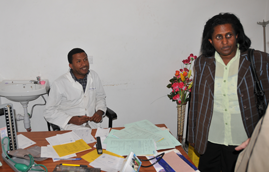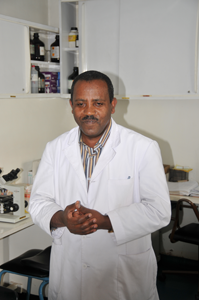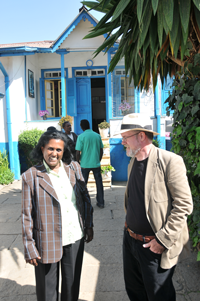The secret to aid is people
Editors' Note: This will be the last Aid Watch post until Monday after the holiday weekend. Happy Thanksgiving! Which attribute of an aid project makes it more likely to succeed:
- It will have rigorous evaluation based on some output indicators to make sure it’s working, OR
- It is staffed by people who really, really want it to succeed?

This question came out of a tour of maternity and family planning clinics of Marie Stopes International in Addis Ababa. The dedicated staff of Marie Stopes courageously confronts a sensitive issue responsible for about a third of the deaths behind Ethiopia’s high maternal mortality rate – deaths of mothers during unsafe abortions. Marie Stopes workers offer safe abortions consistent with Ethiopian law. They also provide the whole package for reproductive choices AND safe childbirth for women: contraception alternatives, testing and counseling for HIV, prevention of mother to child transmission of HIV, prenatal care, and a clinic for difficult, life-threatening deliveries referred from Ethiopia’s official hospitals. (Although I’m NOT a fan of family planning fanatics who decide on behalf of the poor that they should have less children; I AM a fan of family planning people who respect their clients enough to just give them more choices.)

One afternoon’s visit is not enough to verify a great aid project, and my brief stop at the Marie Stopes project is pathetically inadequate. But since informal site check-ups are much cheaper and more universal than more rigorous methods like randomized controlled trials (RCTs), which will only EVER be available for a small sample of aid projects, it’s worth pointing out a few advantages of the humble site visit.
First, a site visit tells you something about clean, well-maintained, high quality facilities, whether medicines and equipment are available, not to mention whether the health workers are present and whether there are patients waiting because they value the services. A government hospital in a regional town failed many of these same tests during another brief visit during this trip.
Second, gut instincts tell you at least a little something about the attitudes of the PEOPLE involved, workers and patients.[1] At Marie Stopes, I was very impressed with the eloquence and dedication of our host, Sister Shewaye Alemu, an Ethiopian who is the Addis Ababa Area Manager. The Danish country director of Marie Stopes (the only non-Ethiopian employee), Grethe Petersen, told me her mission was to be the LAST non-Ethiopian country director of Marie Stopes.
RCTs, on the other hand, don’t have a good way of getting at the intangible human element in aid projects –is there good team spirit and morale? Are there good relationships between management and workers, and amongst coworkers, and between workers and patients? There are no scientific recipes on how to DO human relations, just tacit knowledge on managing people, and personal attributes like trust, humility, patience, and respect. Getting to know the people involved can give you a sense of how well this intangible stuff is going.

RCTs could possibly identify the right actions, but if PEOPLE’S motivation to get good results is low, these actions will not be implemented in the right way, or not at all. This will usually be obvious in a site visit.
I am not saying that getting to know the aid workers and more rigorous methods like randomized controlled trials are mutually exclusive – both have value. But even one brief visit to Marie Stopes in Addis was enough to increase HOPE in the potential for determined PEOPLE to make a difference in aid, and was strangely more persuasive than randomized trials.
Think of the analogy to the private sector: venture capitalists don’t do randomized trials but they DO talk to the entrepreneur and inspect the operation in situ. We need venture capitalists and entrepreneurs as well as randomized experimenters in aid.
[1] A related observation: the best evaluations of actual project implementation I have ever read BY FAR are written by anthropologists, such as James Ferguson’s all-time classic on a World Bank project on Lesotho.
 From Aid to Equality
From Aid to Equality
